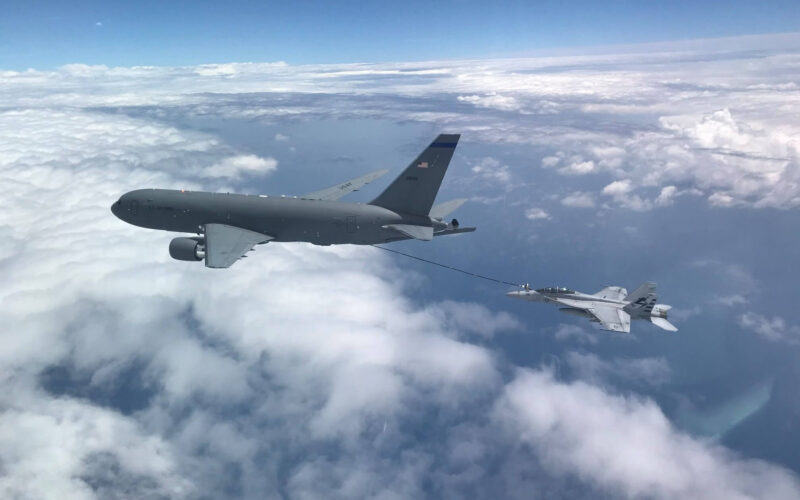The Boeing KC-46A aerial tanker got a green light from the US Air Force Air Mobility Command (AMC) commander to begin limited refueling missions.
Air Mobility Command (AMC) commander General Jacqueline Van Ovost approved the Boeing KC-46A tanker Centerline Drogue System to conduct everyday refueling missions on July 9, 2021.
“The last six months of operational use and programmatic evaluation indicate conditions have been met for ICR declaration of the Centerline Drogue System mission set,” said Van Ovost. “This decision reflects a risk-informed, data-driven, constraint-analyzed approach to releasing KC-46A operational capabilities to the joint force.”
The Boeing KC-46A Pegasus now has “proven capabilities that can be employed operationally for probe and drogue air refueling”, the AMC statement reads. However, boom refueling missions are still being restricted, except for training, exercise, demonstration and familiarization operations.
A difficult induction
The KC-46 Pegasus was supposed to replace KC-135 Stratotanker and KC-10 Extender to strengthen USAF refueling capacities. The Air Force has ordered 98 of a planned fleet of 179 KC-46 tankers. 47 are already delivered to the USAF.
However, the troubled aerial tanker has faced numerous deficiencies since its first delivery. Upon delivery of the first aircraft on January 10, 2019, more than a year after the due date, it appeared that the “Remote Vision System” (RVS), developed by Rockwell Collins, did not work as intended, especially under certain light conditions. The RVS is composed of several sensors and cameras that should help a boom operator during aerial refueling. But the USAF has discovered discrepancies between the motion shown by the RVS and what was happening in real life.
Another problem was the design of the boom itself. During aerial refueling, both the tanker and the receiving aircraft must work together to connect the nozzle of the boom to the receptacle of the aircraft. However, multiple aircraft within the USAF, including the A-10 ground attack aircraft, were found unable to generate sufficient thrust to connect. Boeing was awarded $55.5 million by the USAF to fix it.
Finally, “excessive fuel leaks” were discovered during a refueling test in July 2019. “In some cases with this issue, aircraft maintenance crews are finding fuel between the primary and secondary fuel protection barriers within the system,” Boeing reported. As per the contract, it is now up to the manufacturer to find a fix for this new problem – on its own funds.
The latest KC-46 manufacturing issues were discovered in March 2021. The issues, both of which are going to be addressed at Boeing’s expense, involved receptacle drain line tubes and Flight Management System software.

